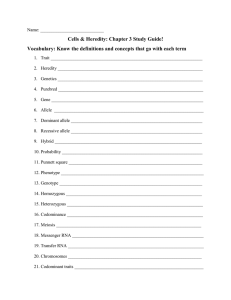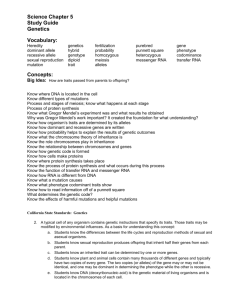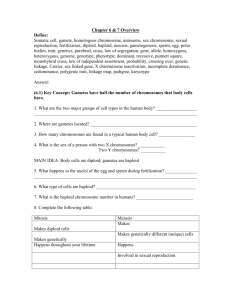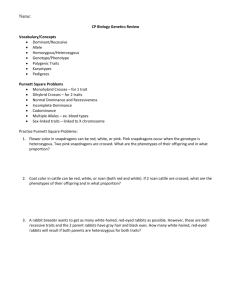Chapter_4_Study_Guide
advertisement
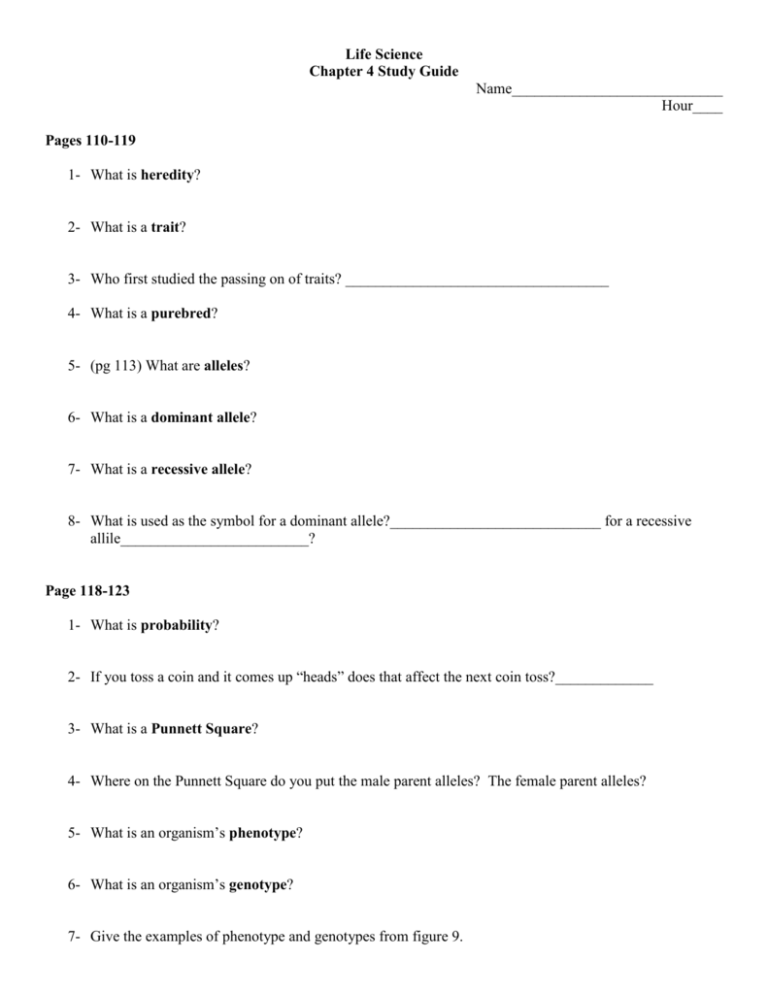
Life Science Chapter 4 Study Guide Name____________________________ Hour____ Pages 110-119 1- What is heredity? 2- What is a trait? 3- Who first studied the passing on of traits? ___________________________________ 4- What is a purebred? 5- (pg 113) What are alleles? 6- What is a dominant allele? 7- What is a recessive allele? 8- What is used as the symbol for a dominant allele?____________________________ for a recessive allile_________________________? Page 118-123 1- What is probability? 2- If you toss a coin and it comes up “heads” does that affect the next coin toss?_____________ 3- What is a Punnett Square? 4- Where on the Punnett Square do you put the male parent alleles? The female parent alleles? 5- What is an organism’s phenotype? 6- What is an organism’s genotype? 7- Give the examples of phenotype and genotypes from figure 9. 8- What does homozygous mean? 9- What does heterozygous mean? 10- What is the result of co-dominance? Page 126-130 1- How many chromosomes are in a grasshopper body cell? 2- How many chromosomes are in a grasshopper egg cell? 3- So, there are 12/24/36 (circle one) pairs of chromosomes in a grasshopper body cell. 4- What dos the chromosome theory of inheritance say? 5- What is meiosis? 6- How do the “products of meiosis” fit onto the Punnett Square? 7- Where are genes located? 8- How many genes do you have on your 46 chromosomes? Page 131-137 1- (pg 133) What are 3 differences between DNA and RNA? 2- (Figure 17) What are the basic steps for a cell to make proteins? 1- The DNA molecule is a “pattern” to make RNA. 2- Messenger RNA . . . 3- Transfer RNA . . . 4- The protein . . . 3- Is there only 1 kind of RNA?_________ Give an example. 4- What is a mutation? 5- What are the 3 kinds of mutation? 5- Are mutations always harmful to an organism? _____________ Explain. For the Quiz, make sure you . . . Can define: Heredity, trait, gene, alleles, dominant allele, recessive allele, phenotype, genotype, homozygous, heterozygous, meiosis, mutation Know what an organism looks like if it is heterozygous for a gene. Can make a Punnett square to tell the traits of offspring from 2 parents and tell what the offspring will look like Understand how to tell if a gene is dominant/recessive, co-dominant, or polygenic Understand why it is important for egg and sperm cells to have half of the genetic material of body cells Can calculate the number of chromosomes in an egg cell given the number in the body cells and visa versa Know the difference between DNA and RNA
